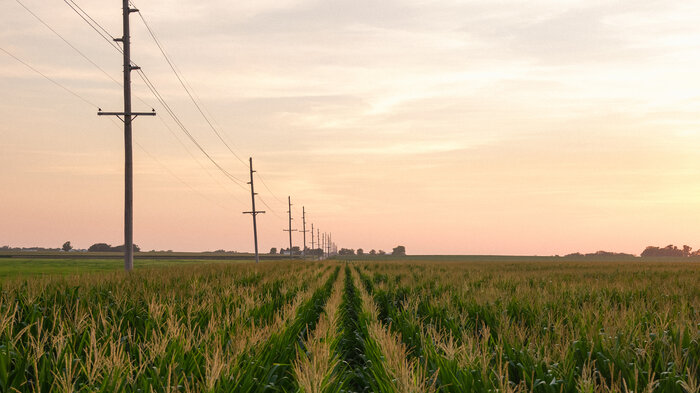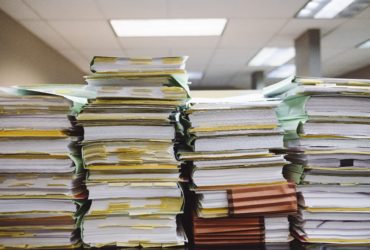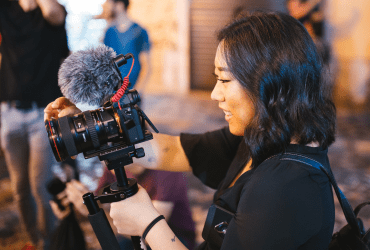By Eric Ferrero, Executive Director
A remarkable new investigation on NPR found that heat is killing workers in the U.S. – particularly people of color – and that there are no federal rules to protect them. A team of investigative reporters across four media organizations in several states found that at least 384 workers have died from environmental hear exposure in the last decade. Many of the people who died work in agriculture, construction and trash collection.
Within weeks of the story airing on NPR, President Biden announced an “all-of-government effort” to address the problem, which will include targeted inspections, enhanced enforcement and a new federal rule to protect workers from heat.
I talked with Brian Edwards, one of three fellows at Columbia Journalism Investigations (an investigative reporting unit at the Columbia Journalism School) who received a grant from the Fund for Investigative Journalism to work on this project with NPR. I asked him about how the investigation unfolded, his advice for other early-career journalists and the importance of collaborative investigative reporting.
A: I was really lucky to be a part of a team lead by Kristen Lombardi, Columbia Journalism Investigation’s director, who is so skilled at bringing together reporters to collaborate. We knew early on that we wanted an audio component to the story, and that there was going to be an opportunity for localized stories within our national dataset. Kristen pitched the project to Cheryl and NPR signed off on it, then Cheryl helped connect us with stations in Texas and California, and we were off running.
We were essentially divided into three teams: national, California and Texas.
For the national team, Cheryl and Robert worked with us CJI fellows (Scooty Nickerson, Julia Shipley and myself) for NPR’s main story. The Columbia team did the reporting, while Cheryl and Robert served as guides throughout the process and helped us line up different ways to compile data, gather audio from our sources and make sure that we could pull from our local teams’ reporting to make the story truly national. Cheryl did the final edit of the national story and wrote the audio script.
In Texas, Scooty and Julia were teamed up with two great reporters, Stella Chavez and Sara Ernst. The four of them, under the guidance of editor Fernanda Camarena, tackled a multi-part series on what we called “repeat offender” companies, or those that had multiple deaths. Their story largely focused on the construction and waste management industries.
And in California, I was teamed up with the fabulous Jacob Margolis at KPCC/LAist, as we set out on a bit of a different goal with editor Adriene Hill. We knew that California had heat protections for workers, but people were still dying. We wanted to know why. We ended up producing two large investigations, one into the state’s complete fumbling of worker protections and the other around firefighters that were dying and getting injured during training before they ever saw a fire.
We were also lucky to have a publishing partner in Public Health Watch, a new organization led by longtime labor reporter and editor Jim Morris. He often served as an experienced voice that helped guide us and cut out the many, many words bogging down these very long investigations.
Having that geographic breakdown between stories really helped us juggle the different threads. We checked in weekly via videoconference as a large team and met constantly with our local teams throughout the week. The order of operations was certainly never simple, but the reporting really did grow from the ground up.
Q: The data in this story is particularly compelling and is surely one reason the story has had such a big impact so quickly. How did you all compile the data on heat deaths and what unique analysis did you conduct?
A: Early on, the CJI team realized that without a federal heat standard, there was no official cataloguing of heat-related illness and death.
Scooty, the data guru of our CJI group, scraped thousands of OSHA death reports with keywords like “heat” and “hot” from across the country. But because these weren’t official classifications, the three of us needed to confirm whether they were actually heat-related. Over several mind-numbing days and nights, we read through every single case narrative, which were about a paragraph long. When I use “days and nights,” I mean that literally. I finished my batch on a Friday night at a beachside restaurant during a weekend getaway with my partner. I know the others worked tirelessly as well.
In the end, we had essentially done what OSHA had failed to do itself – classify its data related to heat. We now not only had hundreds of deaths to use as anecdotes for our investigation, but we also saw that about a dozen companies had several worker deaths in recent years and knew that was where our focus needed to go.
Q: In your grant application, you talked about how you had already conducted interviews with dozens of sources and were cultivating relationships with the families of several people who died because they were working in the heat. Many of these folks work in fields and may be undocumented. How did you find their families and gain their trust?
A: This was a tough lift. Early on, it was clear that there would be language barriers, cultural differences and a rightful distrust in communities that are often ignored by reporters. There was no one-size-fits-all approach. We found advocates willing to take us into the fields to talk with workers. We knocked on doors, placed hundreds of calls, sent emails and did social media outreach. For the most difficult sources, it required going back, again and again, to build trust. There were some big victories near the end of our reporting with sources that had taken months of legwork.
I want to be respectful of the background work done with sources that weren’t on the record and protect some of our not-for-attribution conversations as well, but there was one source that Scooty talked with for almost the entire length of our reporting. They truly trusted him, but the death was still so raw that they were nervous about going on air. They set up multiple meetings to record an interview, but they kept falling through, month after month. Scooty was never pushy or insistent, but he spent hours getting to know them and gave them the chance to set the tone and parameters of the interviews. We had pretty much given up on landing that person for the story, but right near the end, they finally agreed to be on record.
From the start, we knew that people weren’t going to be excited to talk to us about their loved ones’ deaths. Why would they be? But we felt that we could show how their stories could help others, how it could prevent others from being hurt, then they might see the value in participating.
Q: The impact of this investigation was strong and swift, with the White House directing agencies across the federal government to address it and a lengthy statement from the president himself. What are advocates on these issues watching for, in terms of concrete policy changes that can protect workers, and what questions should journalists be asking in the months ahead to hold the federal government accountable for action it has committed to take?
A: I think there are two important parts.
The first is picking apart how the federal government implements worker protections for heat. Will the rules provide temperature triggers that protect workers when heat reaches a certain level? Are there added protections for extraordinarily hot days? Will adequate rest, water, shade and acclimatization be provided? Are these triggers and protections guided by science? Or are they political decisions?
The second deals with enforcement. In California, my reporting partner Jacob Margolis and I saw that, even with strong laws, inadequate enforcement means businesses won’t take regulations seriously. Reporters can study citation data the same way that we did in order to track progress over time. Are the number of citations trending downward? Are deaths, which experts say are 100% preventable, decreasing? What types of business are getting hit with citations the most? What are trade organizations saying to lawmakers about these laws?
All of these questions should be steeped in the framework of climate change. A new regulation may be good when it debuts. But will it remain helpful in five years? Ten years? California proved that heat protections need to evolve with our changing world.
Q: You earned your B.A. in journalism in 2016 and your Master’s last year, after working as a daily reporter in Minnesota and Alabama for a couple of years. This was an extraordinary project to be part of so early in your career. What advice do you have for other journalists who are early in their careers and want to move further into investigative reporting?
A: I am blessed to have been a part of the project.
Throughout my career, I have sought out editors who have been gracious enough to guide me and push me to be better. With the news business worsening each year, most publications don’t have editors with the time to do that. Take any opportunity you can for critique and advice.
Since I started reporting, I have also been lucky to have had a strong community of colleagues and friends that I can rely on when I have questions about reporting, writing, ethics and anything journalism-related. Read their work. Ask them how they did it. Shamelessly steal their techniques and tips and adapt them to your own style. There is no best way to report. It is one of the things I love about the field.
And finally, I want to give a bit of advice that is my personal opinion, and it cuts against the grain of conventional journalism advice. Young reporters are constantly being told to become multi-talented reporters: learn to write well, edit concisely, shoot photos, take video, expand your social media skills and be a well-rounded reporter. This isn’t bad advice. In fact, it has served many colleagues well. Throughout my career though, I have always made investigative journalism a focus. That meant prioritizing on enterprise stories, requesting documents, building inside sources and approaching all pieces, even daily news, with an investigative mindset. What is the wrongdoing? Who is doing it? Who is being hurt? How can it be fixed?
Like any skill, it requires practice. The more you do it, the better you get at it.




